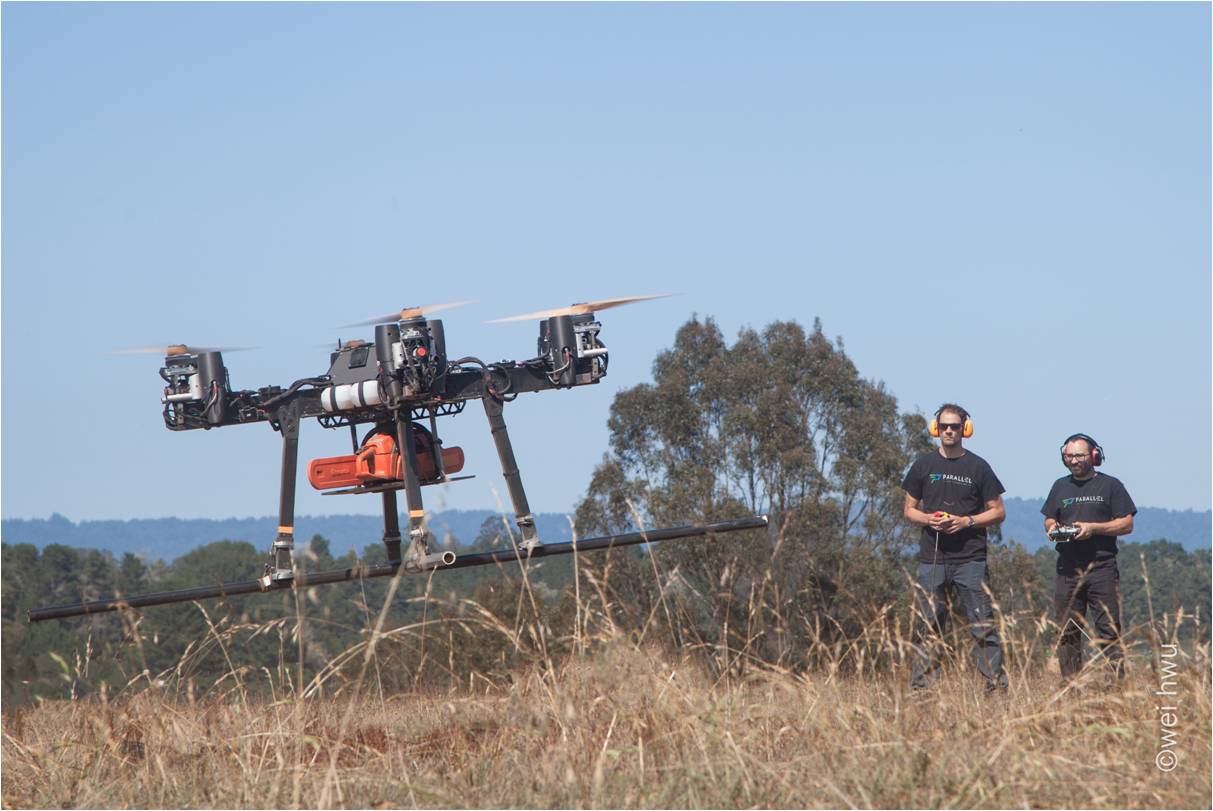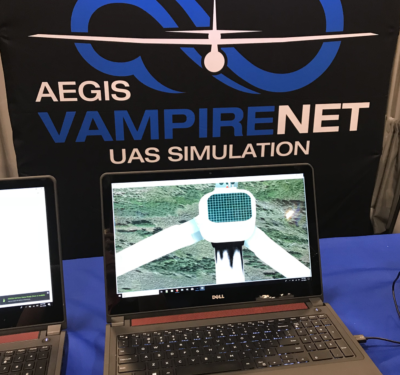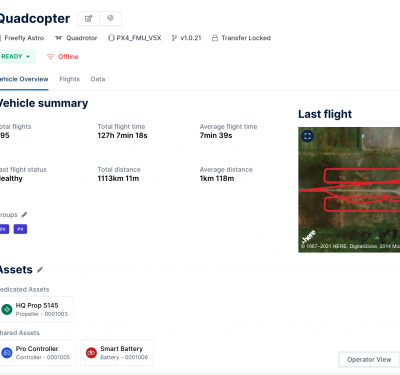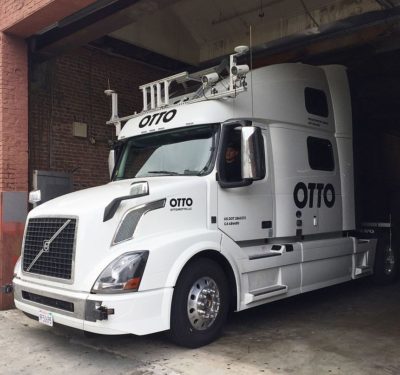
According to California-based startup Parallel Flight Technologies, today’s electric drones can only carry a heavy payload for 15 minutes—but they exist to change that.
The company’s founders were motivated by the role that drones can play for good, such as helping to fight wildfires or assist with search and rescue missions. The catch? Those missions often require long flight time and heavy loads.
Today, in an effort to push the future of flight times for heavy-lift drones forward, the company announced it has successfully flown their parallel hybrid multirotor for the first time using a patent-pending technology that allows multi-rotor drones to fly for hours with heavy payload.
During this flight, Parallel’s unmanned aerial vehicle lifted a couple of heavy duty chainsaws, which would not be an uncommon delivery while fighting a fire in a remote forest.
“We’ve worked on a new concept we call Parallel Hybrid technology, which gives the platform the capability of lifting its own mass in payload for over two hours,” says CEO and co-founder Joshua Resnick, a former lead engineer for Tesla’s Semi Truck program. “This platform opens new possibilities for unmanned logistics, search-and-rescue, firefighting, and heavy sensor applications.”
What Resnick says makes this hybrid technology unique is that it connects with the internal combustion engine and electric motors in a way that’s been used in cars, but never before in a multirotor aircraft. It’s fully redundant and can continue flying in the event of an engine failure, resulting in what he calls, “unprecedented efficiency, duration and lift capability.”
This new technology also offers ten times the improvement over existing all-electric systems in terms of flight-time while carrying a heavy payload. The company is planning on deploying it for firefighter support, rural unmanned logistics, and agricultural applications.

While the company receives funding from NASA’s Small Business Innovative Research for prototype development, it’s kicked off an equity crowdfunding campaign to take their mission to the next level with the goal of bringing their first commercially available aircraft to beta programs with customers late next year.
“We’re very excited that our prototype is finally off the ground and proving to be every bit as
effective for payload and duration as we imagined it in our drawing board,” says Resnick. “We’re also excited to kick off joint demonstration missions with our early partners in 2020.”
The campaign can be accessed at https://www.startengine.com/parallel and includes a video of the team and the aircraft in action.






